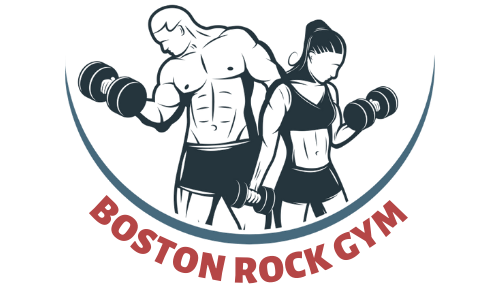
A personal fitness plan is like a road map to your success – it should be concrete and attainable. Without a fitness plan, you don’t know what you are aiming for and it will be harder for you to achieve the body goal of your dreams. So, how exactly do you make a personal fitness plan?
Keep in mind that every person requires a different and customized personal fitness plan – hence the word “personal” because it should be tailored to you! We think that it is best not to just randomly look for fitness plans on the internet or a friend because their goals and needs are different from yours.
In this guide, we will help you to develop your very own personal fitness plan. We hope that this plan that you will soon write up will lead you to finally achieve your goals in the future. Remember, plans can be changed anytime depending on various factors, so don’t fear some hiccups along the way.
Contents
Factors to consider when writing a personal fitness plan
So, what factors should you consider if you want to write a personal fitness plan? Here’s what you need to think about before you write anything on paper (or on your phone):
Your age
A personal fitness plan should fit how old you are (or the age of the person the plan is for). Younger people might become more intimidated with very heavy workouts – the same is true for seniors who are at risk for bone and muscle injuries.
Therefore, always consider the age of the person since certain workouts are meant for only specific age groups due to their strength and endurance. When in doubt, talk to your gym trainer or coach to know the workouts are ideal for your age.
Your fitness goal(s)
What do you plan when going to the gym? Do you want to work out because you want to gain muscles and impress a girl? Do you want to shred pounds because you simply want to live healthier? Are you dreaming of being an Olympic weightlifter someday? Do you like sports and want to get stronger?
Ask yourself these questions and you will come up with an overall theme or general direction for your fitness plan. Strength training, for example, has a different training routine than someone who just wants to get buff at the gym.
Likewise, those who just want weight loss also need something different. As we mentioned above, personal fitness plans are tailored to who you are and your goals for your body. Each of us has a specific goal in mind for our fitness, anyway.
Your fitness level
Are you a beginner when it comes to workouts or have you been doing sports and going to the gym frequently? Have you been on a long hiatus and just got back at the gym? Your fitness level should define your plan so that you won’t feel overwhelmed or lacking in training.
Assess what fitness level you are currently in and from there, you will have an idea of what to include in your plan. Again, aside from online guides, don’t be shy to ask your gym trainer about fitness plans that suit your level – especially if you are just a beginner.
It might be very tempting to lift big weights when you are starting (or returning after a layoff) but workout choices should have a gradual change to avoid injuries and body shock, which you don’t want because it makes you feel tired easily in the end, resulting in less effective workouts.
Your current lifestyle
Every person has a different lifestyle so not everyone can go to the gym 24/7 – especially those who have 8-hour jobs or need to attend to their family. Therefore, they have to make most of their time and think about their fitness plan carefully whilst considering their schedule.
How to write a develop a personal fitness plan
Now that we know what can affect your fitness plan, it’s time to write it. So, what’s the first step in developing a personal fitness plan? Check it out below:
Assess your lifestyle
The first step to writing and developing a personal fitness plan is to know your lifestyle, and then think of something consistent in your workouts. Keep your workout plans as consistent and as regular as possible – results do not just happen overnight!
By knowing your lifestyle and the right kind of workout program for you, training consistently will help you to achieve whatever goal you have in mind. Here are the key elements that you should know about your lifestyle and how it will help you to write your fitness plan:
Length of your workouts
Ask yourself: how long will you work out for a given day? How many minutes will you allot for your gym time or home workouts? Not every person has the same kind of schedule, so it still depends on the nature of your lifestyle and career.
With that said, the length of your workout doesn’t always equate to easier results if you’re doing it wrong. You should still consider if your workout is done consistently and efficiently (e.g. proper form, the right workout for your age, fitness goals, etc.) to get the results you want.
Frequency of your workouts
How many days in a week do you want to do workouts? Most people will only work out on the weekends but some will take it to 6 days a week (and have one rest day). See what best fits your current schedule and from there, you’ll know what to write.
Time of the day to work out
When do you want to go to the gym? Some people prefer heading out as early as 4 AM when the gym isn’t busy yet, or during lunchtime when folks are mostly out to eat. Some, who don’t have the luxury of going outdoors in the morning or are stuck in the office for the rest of the day, hit the gym at night.
Choose Your Workouts
Look for workouts that you believe will benefit your body and help you attain your goals. Most people just go for total body workouts or compound exercises because they are like multitaskers when it comes to working all sorts of muscles in your body.
You can choose from cardio or strength training, as well as a combination of both. Weight lifters often do strength training, which will increase your metabolic rate. Strength training workouts include squats, lunges, push-ups, and tricep dips.
Cardio workouts, on the other hand, help you to improve your stamina, which helps in fat loss as well. If you need to build your stamina for sporting activities so you last longer, cardio and aerobics should be in your workout plan.
Circuit, interval, and HIIT (high-intensity interval training) are examples of training types that help reduce fat and combine both strength and cardio training. Always remember that there is no way to spot-reduce fat but there are ways to do such workouts regularly.
To choose one for your needs, here are our recommendations based on your goals:
- For weight loss: combine strength and cardio workouts
- For muscle gains and weight loss: portioned strength training, HIIT conditioning, and low-intensity cardio split into 5 days
- For gaining a healthy weight: more strength training workouts and less cardio
Figure out sets, reps, weights, and rest times
If you don’t know many reps and sets you need to do per workout depending on your fitness goal, you can ask your fitness trainer or you can also try it out for yourself. Start small and don’t push yourself in one go – the same is true when trying to lift weights.
Of course, never neglect time to rest because this will help your muscles to recover after a difficult workout. The number of sets, reps, and weights you should lift depends on your workout goals. Typically, muscle gain goals or hypertrophy need a lot of reps.
Sets are the number of instances you do a series of exercises. Two to three sets are usual for squats and similar exercises. However, if you are new to workouts, just having 2 sets will be enough. Typically, sets should have some rests in between.
Reps, also known as repetitions, are the number of times you perform a move or exercise. In a set, you will have multiple reps depending on your workout goals. Different numbers apply depending on the type of workout that you want to do.
- If you want to build muscle, go for at least 6 to 12 reps with heavier weights because it will promote growth. Each rest between sets should be 1 to 1.5 minutes to give you more time to recover.
- On the other hand, lighter loads and more reps (12 to 20) should be done if you want to train your stamina and endurance. The rest should only be from 30 seconds to 1 minute.
Final Words
When writing any personal workout plan, make sure you increase the intensity and difficulty each time you believe you’ve “graduated” from your current level. Staying in one place is not recommended – you need to evolve your fitness plans eventually when you are ready.
